Attractions Nearby Ostrava, Day Trips and Excursions
(Ostrava, North Moravia, Czech Republic)
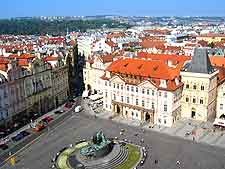
The Moravia area of the Czech Republic is filled with leading attractions and many of these are easy to reach from Ostrava, by either car, bus or train. Perfect for a day trip from Ostrava, the ever-expanding city of
Brno is home to around 400,000 residents and has much to offer in the way of attractions, a number of which are close to the Old Town Hall and also the main shopping street of Masarykovo.
Although at 383 km / 238 miles to the west of Ostrava the Czech capital of
Prague could hardly be considered nearby Ostrava, its endless selection of truly world-class attractions are really not to be missed. Considerably closer and still worth visiting are the cities of Havirov, Opava, Zlin and also Olomouc, where you will find the extremely famous six Baroque fountains, depicting Roman gods and also the Roman leader, Julius Caesar.
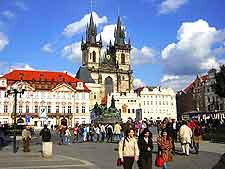
Prague
Prague lends itself to a short break at the minimum, allowing visitors to have enough time to at least explore some of its main attractions. These include the Old Town Square (Staromestské Námesti), the Royal Palace (Královsky Palác), St. George's Basilica and of course Prague Castle itself, which was founded as long ago as the 9th century by the wealthy Prince Borivoj, and presides over the Hradcany district from its elevated situation.
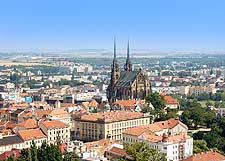
Brno
As the Czech Republic's number two city, Brno may be a far cry from Prague, but its cosmopolitan appearance, stately boulevards and plentiful parks offer an enticing and engaging atmosphere. Visitors from Ostrava will find that Brno lies some 181 km / 112 miles to the south-west and has many historical attractions, with Spilberk Castle being one of the most eye-catching. The Cathedral of SS Peter and Paul is another rather impressive monument, which stands out in Brno.
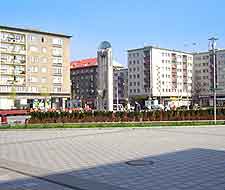
Havirov
A relatively small city situated some 17 km / 11 miles to the south-east of Ostrava, Havirov has a population approaching 85,000 residents, which actually makes it the region's second biggest. Havirov is an extremely youthful city and was established as recently as the middle of the 20th century, meaning that its attractions are by no means historical and often relate to its coal mining past. The town square is an important part of Havirov city centre, while others may prefer to explore the surrounding villages.
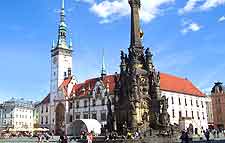
Olomouc
A prominent city within the eastern region of the Czech Republic, Olomouc makes for a popular day trip from Ostrava and lies around 102 km / 63 miles to the south-west, with a journey time of less than two hours. Attractions within Olomouc are varied and often based around its series of large public squares. Always popular with tourists is the Town Hall and its astronomical clock, as is the World Heritage Site of the Holy Trinity Column, which was built in the early 18th century and measures roughly 35 metres / 115 feet. Much of Olomouc boasts a definite Gothic character, particularly the churches of St. Moritz and St. Michael.
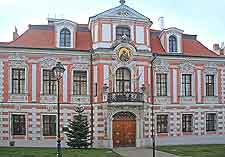
Opava
Straddling its namesake Opava River, the city of Opava has grown to become a leading cultural and economic centre in the Moravian Silesian Region the of Czech Republic. A number of noteworthy regional attractions present themselves in Opava, such as the Silesian Land's Museum and also the acclaimed Silesian University of Opava, which was only founded in 1991, making it the most youthful university in the whole of the Czech Republic. Today the Silesian University of Opava is home to almost 4,000 students.
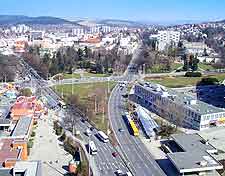
Zlin
The city of Zlin offers a rather robust and fairly modern appearance and is around 105 km / 65 miles to the south-west of Ostrava. Zlin has evolved around its late 19th-century Bat'a shoe factory, although it is also rather famous for its film-making industry. The main attractions in Zlin are architecture and include the Villa of Tomás Bat'a, the huge Grand Cinema (once Europe's biggest), the Monument of Tomás Bat'a and also Bat'a's Skyscraper, which features an elevator office, so that the boss could keep an eye on his employees, whatever floor they were working on.
 The Moravia area of the Czech Republic is filled with leading attractions and many of these are easy to reach from Ostrava, by either car, bus or train. Perfect for a day trip from Ostrava, the ever-expanding city of Brno is home to around 400,000 residents and has much to offer in the way of attractions, a number of which are close to the Old Town Hall and also the main shopping street of Masarykovo.
The Moravia area of the Czech Republic is filled with leading attractions and many of these are easy to reach from Ostrava, by either car, bus or train. Perfect for a day trip from Ostrava, the ever-expanding city of Brno is home to around 400,000 residents and has much to offer in the way of attractions, a number of which are close to the Old Town Hall and also the main shopping street of Masarykovo.




